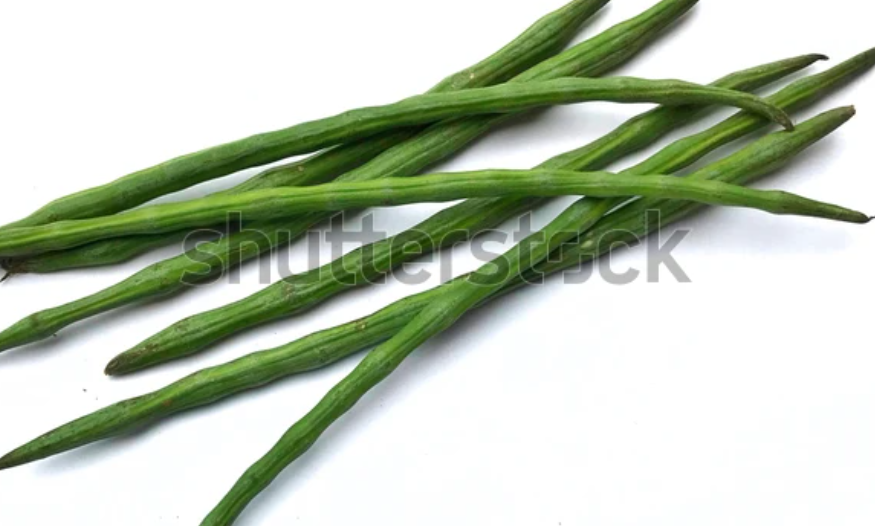Moringa oleifera, often called the drumstick tree, is a member of the Moringaceae family, which includes 13 different species like M. stenopetala and M. peregrina. Originally from South Asia—especially India—Moringa now grows widely across tropical and subtropical regions in Africa, Southeast Asia, and Latin America. It’s a hardy, drought-resistant tree that thrives in warm climates and often produces its best harvests during the dry season.
What really sets Moringa apart is its rich nutritional content. Packed with vitamins, antioxidants, and anti-inflammatory compounds, it has long been used in traditional medicine across India, Africa, and the Philippines. Today, it’s gaining recognition worldwide as a superfood. In many developing countries, it helps combat malnutrition, while in the West, it’s become a popular health supplement thanks to its impressive nutritional profile.


All Edible Parts of Moringa and How People Actually Use Them
Alright, let’s talk moringa—aka the “miracle tree.” Why the nickname? Because, honestly, almost every part of this plant is useful and edible. It’s like nature’s version of an all-in-one tool. I’ve come across it in a few different ways, and every time, I’m surprised by how versatile it is. Here’s the breakdown of what you can actually eat—and how people use it.
🌿 Leaves
These are probably the most well-known part of the moringa tree. And for good reason—they’re packed with protein, vitamins, and minerals. Like, seriously, they put a lot of so-called “superfoods” to shame.
- Fresh leaves: You can toss them raw into a salad, stir them into soup, or cook them like spinach. (I personally like them sautéed with garlic—it’s simple but tasty.)
- Dried leaves: Once dried, they’re usually ground into powder. Ever had a green smoothie that tasted a little… earthy? There’s a good chance moringa powder was in it. It’s also great in soups and sauces.
Whether you’re into clean eating or just trying to sneak more nutrients into your meals, moringa leaves make it easy.
🥬 Pods (aka Drumsticks)
Not the chicken kind—these are long, green, and packed with fiber.
- Young pods: Think green beans. You can chop them up and throw them into stews, or just boil them with some seasoning.
- Mature pods: These show up a lot in South Asian cooking. Ever tried sambar (a South Indian lentil stew)? There’s a good chance you’ve already eaten moringa without even knowing it.
Pro tip: Slice the pods into smaller sections before cooking—they’re easier to eat that way.
🌱 Seeds
This one’s interesting. The seeds go through a bit of a transformation as they mature.
- Young seeds: These can be cooked like peas or even roasted like nuts. They’ve got a slightly nutty flavor—nothing too bold, but nice.
- Mature seeds: This is where it gets cool. They’re pressed to make moringa oil (sometimes called Ben oil). The oil’s light, doesn’t go rancid quickly, and works well in both cooking and cosmetics. I’ve seen it used in everything from salad dressings to face serums.
🌼 Flowers
Yep, the flowers are edible too. I know—this tree doesn’t quit.
You can throw them into a salad, fry them up as fritters (super popular in some places), or steep them into a light tea. They have this subtle mushroom-y taste, with just a tiny bitter edge. Not everyone loves the flavor at first, but it grows on you.
🌿 Roots
This one comes with a little caution flag.
- Young roots: They’ve got a strong, horseradish-like flavor—pretty sharp. Some folks use them in small amounts as a seasoning or for medicinal purposes.
- A word of caution: Don’t overdo it. The roots contain compounds that can be a bit intense, especially if you’re not used to them.
🌳 Other Edible Bits
Honestly, moringa keeps surprising me.
- Bark: In some cultures, it’s used to make herbal teas or for traditional remedies.
- Gum or sap: Yep, the tree produces this sticky substance that people use as a natural thickener in dishes. It’s not super common, but it’s out there.
🍽️ In the Kitchen
There are a million ways to use moringa in daily cooking. I’ve tossed the leaves into scrambled eggs, stirred them into pasta, even added them to rice bowls for a quick nutrient boost. You can freeze them, dry them, powder them—whatever works for you.
In some parts of the world, moringa isn’t just a cool ingredient—it’s essential. It helps fight malnutrition in places where fresh food isn’t always easy to come by. That’s why people call it the “miracle tree.” And honestly, once you see how many uses it has, it’s hard to argue with the name.
So yeah, if you’ve got access to moringa, don’t sleep on it. Try a few things out and see what you like—it might just end up being your new favorite ingredient.